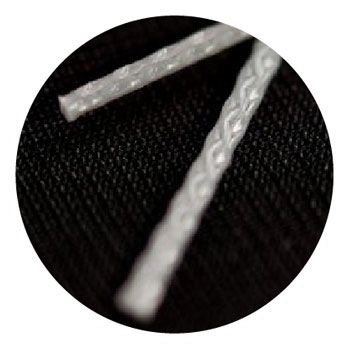
Synthetic fibres
Synthetic fibres refer to a wide range of materials ranging from glass to carbon to plastic (polymers such as polypropylene and nylon).
Synthetic fibres have been widely used in the mining industry for many years. They have also been used for many civil infrastructure applications where demands for structural performance are not especially high. In recent years there have been significant improvements in the material properties of polymer type fibres. It is likely that synthetic fibres will find more applications as designers become more knowledgeable about the way fibres improve concrete performance.
Synthetic fibres tend to fall into two categories with specific purposes:
- Macro-synthetic fibres - The purpose of adding these fibres is to increase fracture energy thus controlling crack sizes (same as for steel fibres). It is well known that aggregate interlock provides significant strength in resisting shear, torsion and bursting. The incremental improvement provided by synthetic fibres in controlling crack openings will enhance the robustness of concrete through better aggregate interlock Dosage is from 1 to 12 kg/m3.
- Micro-synthetic fibres - Plastic shrinkage in the first few hours after concrete starts to cure will also benefit from the restraint provided by these fibres. Controlling plastic shrinkage has the advantage of minimising opportunities for larger shrinkage cracks during the days and weeks taken for concrete to fully cure. Good control of plastic shrinkage reduces or eliminates the "ready-made" cracks that tend to concentrate long-term shrinkage. Dosage is from 0.3 to 1kg/m3.
 |
 |
Both fibre types will reduce concrete workability and require carefully designed concrete mixes. Our experience has been that concrete technologists working with ready-mix concrete suppliers generally have an understanding of the modifications needed to their standard concrete mixes to accommodate synthetic fibres.
There are a number of applications where synthetic fibres have been used for a number of years, such as concrete pavements. However recently we have begun to better understand the benefits that synthetic fibres can provide in three dimensional structures with complex failure mechanisms, including sprayed concrete linings to tunnels and mines. There have also been applications in precast elements with complex failure mechanisms. Testing has been completed on a number of precast elements and one example is underground pits.